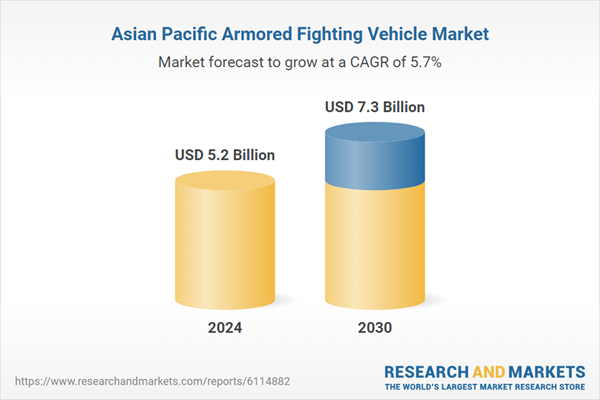Speak directly to the analyst to clarify any post sales queries you may have.
10% Free customizationThis report comes with 10% free customization, enabling you to add data that meets your specific business needs.
Countries are actively investing in the procurement and development of more advanced armored fighting vehicles, leading to increased production and technological improvements in the industry. For instance, According to SIPRI, worldwide defence spending hit a record high of USD 2.443 trillion in 2023 marking the steepest annual increase in over a decade at 6.8% growth. Military expenditure rose across all five continents for the first time since 2009, with defence budgets now consuming 2.3% of global GDP and averaging USD 306 per person globally.
Market Drivers
Increasing Defense Budgets
Rising defense budgets in the Asia Pacific region are a key driver for the growth of the armored fighting vehicle market. As countries focus on improving national security and military preparedness, significant financial resources are allocated to enhance defense infrastructure. Modernizing armed forces with the latest armored vehicles ensures that military personnel are equipped to face contemporary threats effectively. The increased spending also supports the development and procurement of advanced technologies, improving the overall capability of defense forces. For instance, from 2018 to 2022, the Asia-Pacific region made up 41% of the world’s arms imports, driven by rising tensions and territorial disputes. In East Asia, arms imports surged by 21%, with Japan and South Korea showing the most significant increases 171% and 61% respectively making the region a hotspot for military procurement.Key Market Challenges
High Cost of Advanced Technologies
The incorporation of advanced technologies in armored fighting vehicles poses a significant challenge due to the high costs involved. The development and deployment of cutting-edge features, such as autonomous systems, enhanced armor, and advanced weaponry, require substantial investments. These high costs can limit the affordability of AFVs for countries with smaller defense budgets, hindering the widespread adoption of these advanced systems. Financial constraints may slow down the procurement of new vehicles, affecting military readiness and operational capabilities.Key Market Trends
Shift Towards Autonomous Vehicles
There is a growing trend toward the development and adoption of autonomous armored vehicles in the Asia Pacific market. As military forces seek to reduce reliance on human operators in hazardous environments, autonomous vehicles are seen as a promising solution. These vehicles are equipped with artificial intelligence (AI) and machine learning capabilities that allow them to operate with minimal human intervention. The shift toward autonomy can improve the efficiency and safety of military operations, particularly in high-risk zones, and is expected to drive future growth in the AFV market.Key Market Players
- Ashok Leyland Defence Systems
- China North Industries Group Corporation (NORINCO)
- Defence Research and Development Organisation (DRDO)
- Doosan DST
- Hanwa Techwin
- Korea Aerospace Industries (KAI)
- Mahindra Defence Systems
- Mitsubishi Heavy Industries
- Samsung Techwin
- Tata Motors
Report Scope:
In this report, the Asia Pacific Armored Fighting Vehicle Market has been segmented into the following categories, in addition to the industry trends which have also been detailed below:Asia Pacific Armored Fighting Vehicle Market, By Type:
- Armored Personnel Carriers (APCs)
- Combat Support Vehicles
- Infantry Fighting Vehicles (IFVs)
- Main Battle Tanks (MBTs)
- Reconnaissance Vehicles
- Self-Propelled Artillery
Asia Pacific Armored Fighting Vehicle Market, By Vehicle:
- Tracked
- Wheeled
Asia Pacific Armored Fighting Vehicle Market, By Application:
- Defense
- Homeland Security
Asia Pacific Armored Fighting Vehicle Market, By Country:
- China
- India
- Japan
- South Korea
- Thailand
- Indonesia
- Australia
- Rest of Asia Pacific
Competitive Landscape
Company Profiles: Detailed analysis of the major companies present in the Asia Pacific Armored Fighting Vehicle Market.Available Customizations:
With the given market data, the publisher offers customizations according to a company's specific needs. The following customization options are available for the report.Company Information
- Detailed analysis and profiling of additional market players (up to five).
This product will be delivered within 1-3 business days.
Table of Contents
Companies Mentioned
- Ashok Leyland Defence Systems
- China North Industries Group Corporation (NORINCO)
- Defence Research and Development Organisation (DRDO)
- Doosan DST
- Hanwa Techwin
- Korea Aerospace Industries (KAI)
- Mahindra Defence Systems
- Mitsubishi Heavy Industries
- Samsung Techwin
- Tata Motors
Table Information
| Report Attribute | Details |
|---|---|
| No. of Pages | 135 |
| Published | July 2025 |
| Forecast Period | 2024 - 2030 |
| Estimated Market Value ( USD | $ 5.2 Billion |
| Forecasted Market Value ( USD | $ 7.3 Billion |
| Compound Annual Growth Rate | 5.7% |
| Regions Covered | Asia Pacific |
| No. of Companies Mentioned | 10 |









